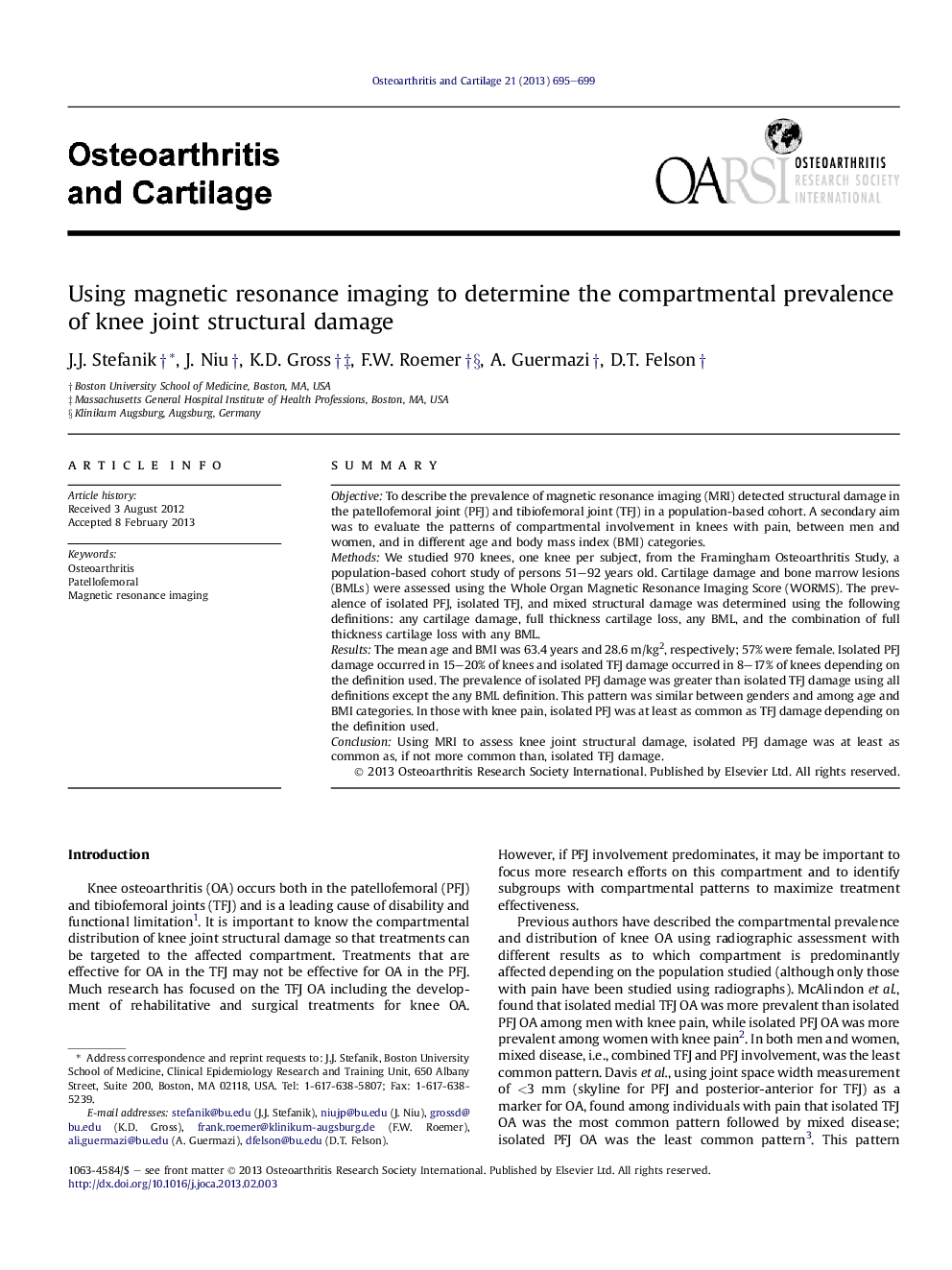| Article ID | Journal | Published Year | Pages | File Type |
|---|---|---|---|---|
| 3379733 | Osteoarthritis and Cartilage | 2013 | 5 Pages |
SummaryObjectiveTo describe the prevalence of magnetic resonance imaging (MRI) detected structural damage in the patellofemoral joint (PFJ) and tibiofemoral joint (TFJ) in a population-based cohort. A secondary aim was to evaluate the patterns of compartmental involvement in knees with pain, between men and women, and in different age and body mass index (BMI) categories.MethodsWe studied 970 knees, one knee per subject, from the Framingham Osteoarthritis Study, a population-based cohort study of persons 51–92 years old. Cartilage damage and bone marrow lesions (BMLs) were assessed using the Whole Organ Magnetic Resonance Imaging Score (WORMS). The prevalence of isolated PFJ, isolated TFJ, and mixed structural damage was determined using the following definitions: any cartilage damage, full thickness cartilage loss, any BML, and the combination of full thickness cartilage loss with any BML.ResultsThe mean age and BMI was 63.4 years and 28.6 m/kg2, respectively; 57% were female. Isolated PFJ damage occurred in 15–20% of knees and isolated TFJ damage occurred in 8–17% of knees depending on the definition used. The prevalence of isolated PFJ damage was greater than isolated TFJ damage using all definitions except the any BML definition. This pattern was similar between genders and among age and BMI categories. In those with knee pain, isolated PFJ was at least as common as TFJ damage depending on the definition used.ConclusionUsing MRI to assess knee joint structural damage, isolated PFJ damage was at least as common as, if not more common than, isolated TFJ damage.
